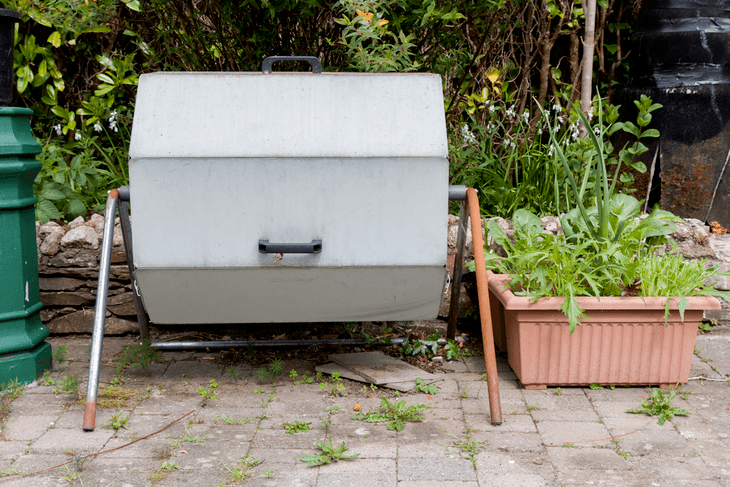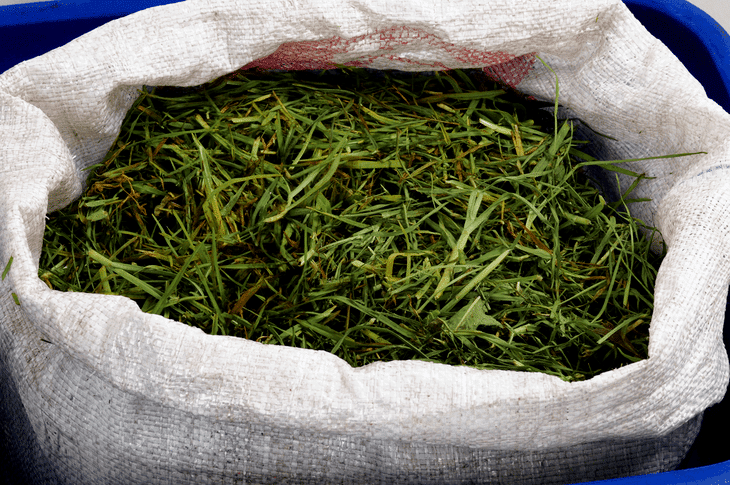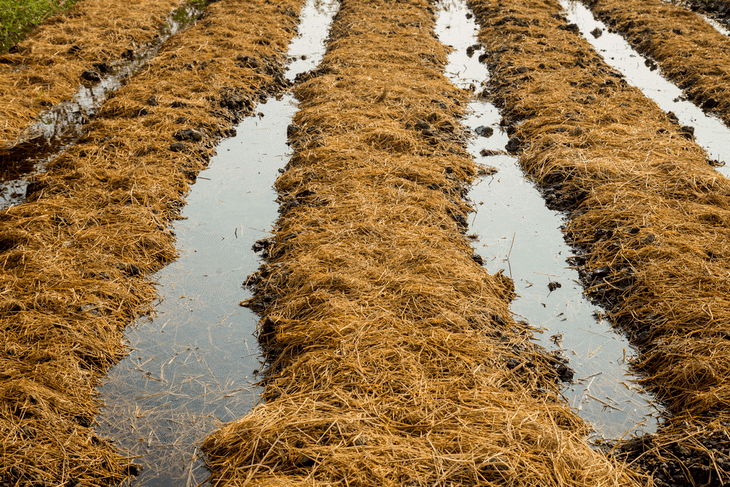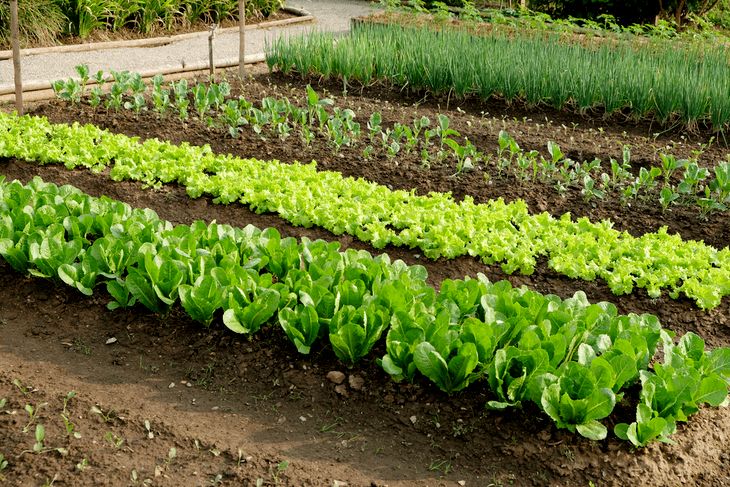
A rotating metal compost tumbler may seem easy to use, but there are proper ways on how to use a compost tumbler.
If you want to create beautiful beds with flowering plants or a small farm with a garden full of vegetables, you will need an organic and rich compost in order to have the most beautiful and healthiest plants. Knowing how to use a compost tumbler will make it possible to convert waste scraps to soil additive without the need of chemical fertilizers.
For you to achieve this kind of garden, you need to know how to use a compost tumbler the right way. Following the recommended tips is vital as there are some ways that will not work and may cause difficulties such as infiltration of vermin and pests.
- GROW A HAPPIER GARDEN – Do you look at other’s gardens with envy? Give your plants the nutrient-dense fertilizer...
- KEEP THE NUTRIENTS COMING – Achieve your gardening goals with a steady supply of ready-to-use compost! This 2-chamber...
- NO MORE HEAVY LIFTING – Miracle-Gro is here to make composting easy for beginners and seasoned green thumbs alike! Our...
- The most beautiful composter in the world. Produces solid and liquid compost.
- Made of high quality food safe, BPA and rust free, UV and antioxidant protected materials.
- Proudly made in America. Let’s bring jobs back to America.
- DUAL CHAMBER COMPOST BIN - Dual chamber composter allow for continuous composting. Fill up one while the other nears the...
- AERATION SYSTEM- Aerated internal bar mixes compost & allows needed airflow.Black, double-wall panels absorb and retain...
- INGENIOUS TUMBLER DESIGN - Turns on axis for easy and balanced rotation.Easy slide doors will help keep track of each...
- Made in Canada from 100% post-consumer recycled plastic - The original 8-sided dual chamber tumbling composter.
- TUMBLING COMPOSTER – Avoid digging and mixing your compost pile by hand. The tumbling design makes mixing easy and...
- EASY TO USE – Fantastic for beginners! The large openings and removable door make it easy to add scraps/clippings and...
- The most beautiful composter in the world. Produces solid and liquid compost.
- Made of high quality food safe, BPA and rust free, UV and antioxidant protected materials.
- Proudly made in America. Let’s bring jobs back to America.

Grass clippings can be one of the components of your compost.
Materials That You Can & Can’t Put In Your Compost Tumbler
1. What You Can Put In Your Compost Tumbler
The first tip on how to use a compost tumbler is adding waste materials for compost to your tumbler. Thus, it is important to know what you can put inside.
-
Waste Materials From Your Garden And Yard
Small pieces of waste from your yard can be put in your compost tumbler. Some of these include grass clippings from mowing, brush or twigs that are thin and small, wooden chips, fallen leaves, and organic materials like moss that has been scraped-off and dead plants from beddings.
For twigs and wood chips that are bigger, you might have to wait for one season before these completely break down. If you need compost that will last longer, you can opt for pine straw, sawdust, fallen nuts and their shells, and pine cones.
-
Waste Materials From Your Kitchen
You can use waste from your kitchen as long as it’s not related to carnivore animals in nature. Some of the kitchen waste you can use includes stale bread, vegetable, and fruit peels, fruit cores, and leftovers that have no fish, eggs, meat, and meat juices.
2. What Not To Put In Your Compost Tumbler
As part of the must-do tips on how to use a compost tumbler, it is also crucial to know what materials to avoid. These materials are dangerous that pests and vermin might get attracted to them.
- Plants that are diseases or have fungus
- Paper and cardboard that are colored or shiny
- Fish, dairy and meat products, bones, and fish parts
- Waste from animals
- Ashes from coal
- Weeds that have seeds which have sprouted
- Harmful and non-organic chemicals and substances
- Dirty diapers
Moreover, Avoid mixing in sticky labels of fruits and vegetables and onions and citrus peel. If you have pets at home, make sure not to accidentally add cat and dog poop in your compost. These materials contain toxic, microorganism, and other chemicals that are harmful to the crops. The citrus peel, for one, has a naturally high level of acidity which kills the worm and other good organisms needed for the composting process.
Steps On How To Use A Compost Tumbler
There are steps to be followed on how to use a compost tumbler correctly. If you want to get the best out of your compost tumbler, you should not think of it as simply putting every waste materials you can find.
Check out the steps on how to use a compost tumbler and apply them to your next composting project!
-
Step 1: Put The Waste Materials In The Compost Tumbler Properly.
In order for these waste materials to decompose fast, make sure that they are small enough before adding them to the container. It is not a good idea to put a whole piece of scrap paper inside or a long twig and wait for your soil to turn rich within a month. Instead, you have to add these materials by increments. This means that you should not fill up your tumbler with mostly grass clippings and a few scraps of vegetables and fruits. It’s best to add materials from time to time so that you will get a good mix and avoid clumping. Clumping of these materials may result in uneven rotting.
For the brown waste materials such as sawdust and shredded pieces of paper, they should only make up 3 parts of the total waste materials in your compost. One part should be made of green waste. By doing this, you can be sure to get the perfect pH balance.
Use compost starter products so that you can make the process fast. You can purchase these online or from gardening stores. Compost starters have good bacteria and microorganisms that can help break down the waste materials. Some compost starter products also have ingredients to help you achieve the right pH balance like nitrogen or lime.
-
Step 2: Determine How And When To Tumble The Canister.
To know how and when you can tumble your compost tumbler, you need to identify its size, shape, and mechanism. Moreover, you need to turn the hand crank one rotation each day. The turning of the compost is similar to the way a dryer circulates clothes. Compost tumblers compost faster with minimal effort than backyard compost.
-
Step 3: Check The Compost For Odors.
An offensive odor may indicate pH imbalance in the compost ratio. An ammonia-like and pungent smell indicates high levels of nitrogen. If this happens, you need to put more brown waste. A rotten-egg and gassy odor indicate an excessive presence of moist or poor ventilation. You can either mix or add brown waste to solve this issue.
-
Step 4: Observe The Compost After 14 Days.

Waiting for the compost to be mature is part of the steps on how to use a compost tumbler.
Mature composts have a loose and dark brown soil appearance and an earthy smell. If your compost hasn’t had these signs yet, it’s best to continue the process of composting for a few more days.
Conclusion
Knowing the ways on how to use a compost tumbler not only manages the waste from your yard but also produces the healthiest crops. All of the steps provided are environment-friendly and organic. It is easy to get a compost tumbler and make your own organic compost. However, if you don’t have the patience and would like to get a ready-to-use product, choose the organic compost mix instead.
- GROW A HAPPIER GARDEN – Do you look at other’s gardens with envy? Give your plants the nutrient-dense fertilizer...
- KEEP THE NUTRIENTS COMING – Achieve your gardening goals with a steady supply of ready-to-use compost! This 2-chamber...
- NO MORE HEAVY LIFTING – Miracle-Gro is here to make composting easy for beginners and seasoned green thumbs alike! Our...
- The most beautiful composter in the world. Produces solid and liquid compost.
- Made of high quality food safe, BPA and rust free, UV and antioxidant protected materials.
- Proudly made in America. Let’s bring jobs back to America.
- DUAL CHAMBER COMPOST BIN - Dual chamber composter allow for continuous composting. Fill up one while the other nears the...
- AERATION SYSTEM- Aerated internal bar mixes compost & allows needed airflow.Black, double-wall panels absorb and retain...
- INGENIOUS TUMBLER DESIGN - Turns on axis for easy and balanced rotation.Easy slide doors will help keep track of each...
- Made in Canada from 100% post-consumer recycled plastic - The original 8-sided dual chamber tumbling composter.
- TUMBLING COMPOSTER – Avoid digging and mixing your compost pile by hand. The tumbling design makes mixing easy and...
- EASY TO USE – Fantastic for beginners! The large openings and removable door make it easy to add scraps/clippings and...
- The most beautiful composter in the world. Produces solid and liquid compost.
- Made of high quality food safe, BPA and rust free, UV and antioxidant protected materials.
- Proudly made in America. Let’s bring jobs back to America.

Having a healthy vegetable garden is the goal of using a compost tumbler.
Want to make your own compost? Get the best compost tumbler first. Thanks for dropping by and have a great day!
Pin it!

Last update on 2024-04-26 at 13:40 / Affiliate links / Images from Amazon Product Advertising API



